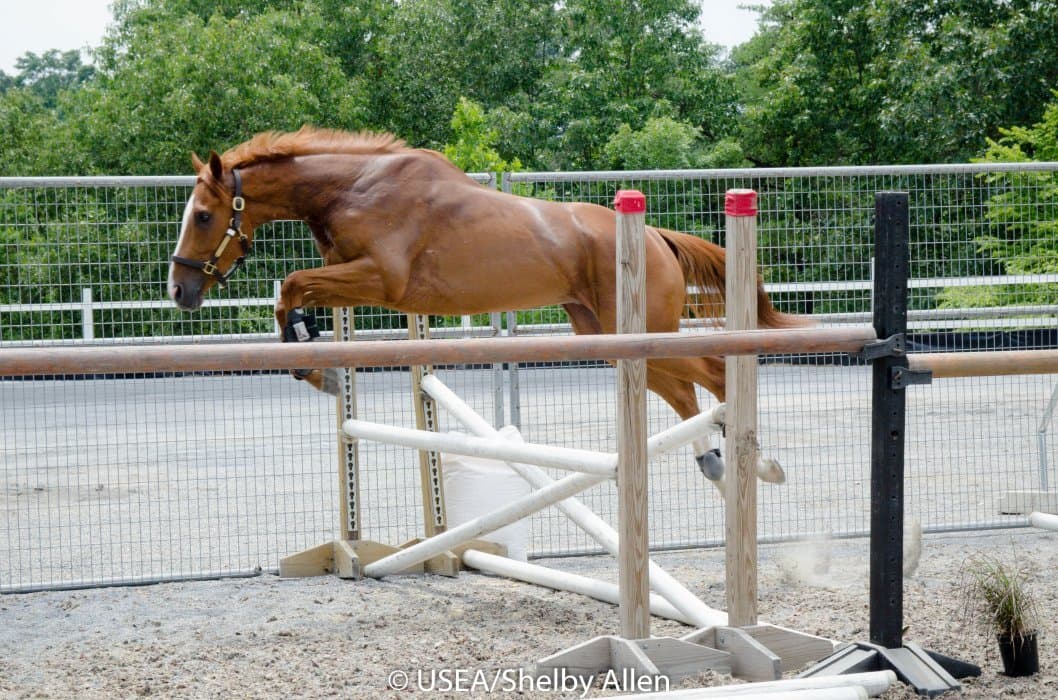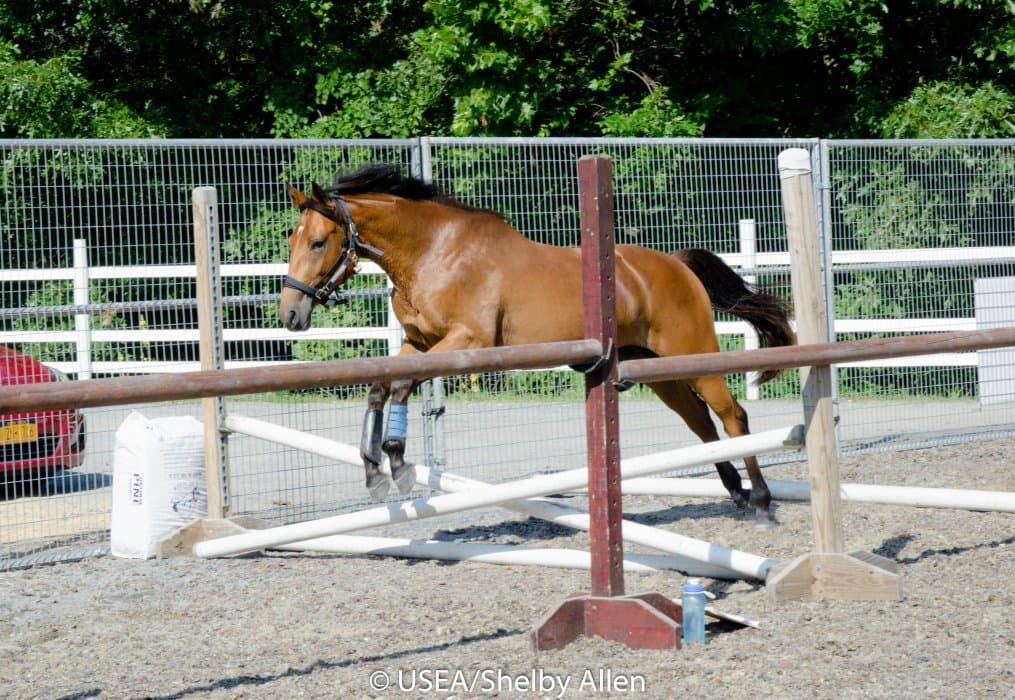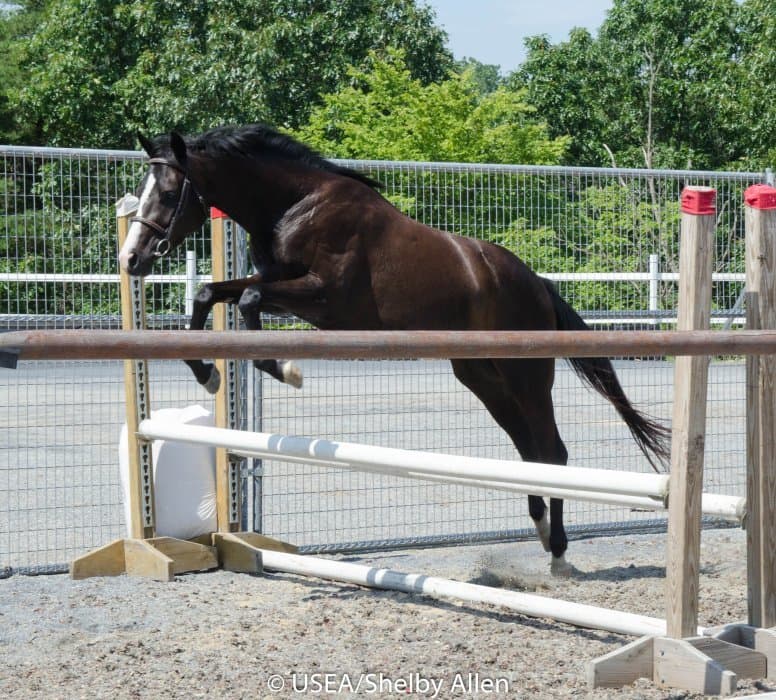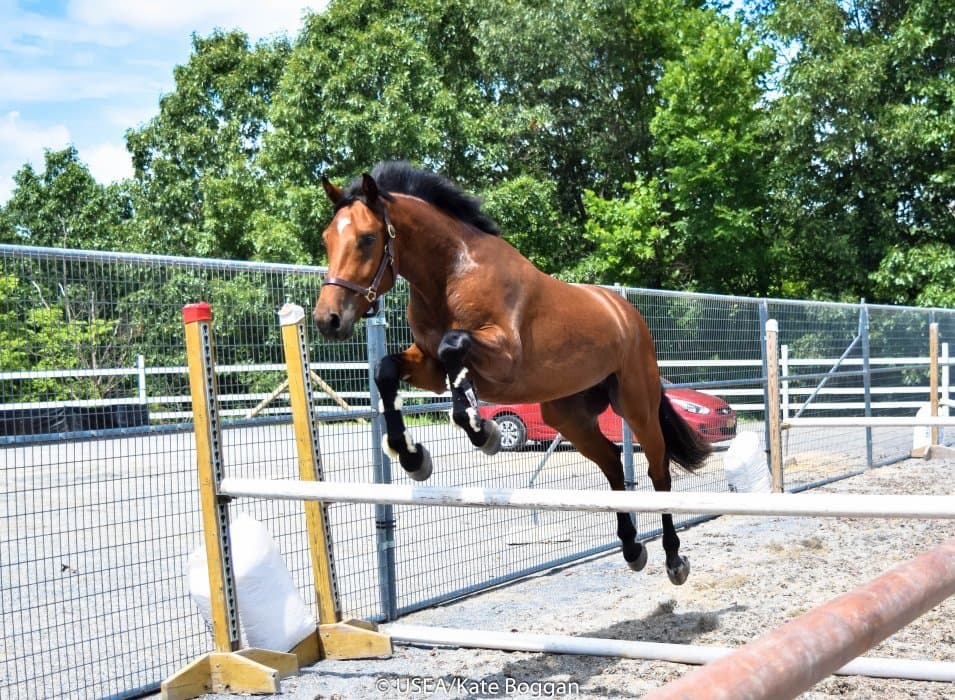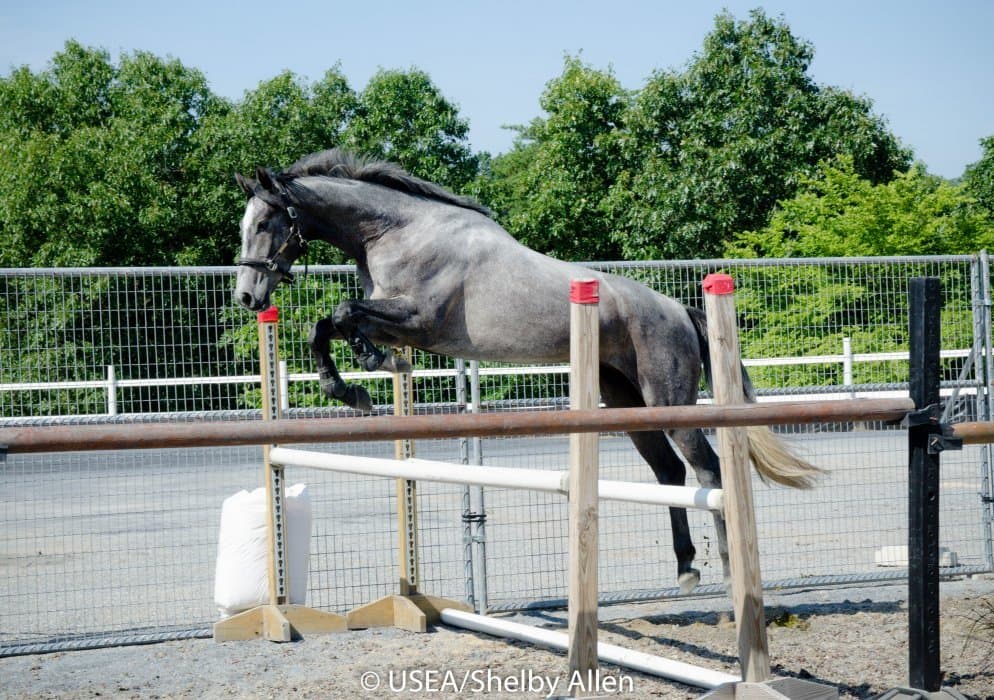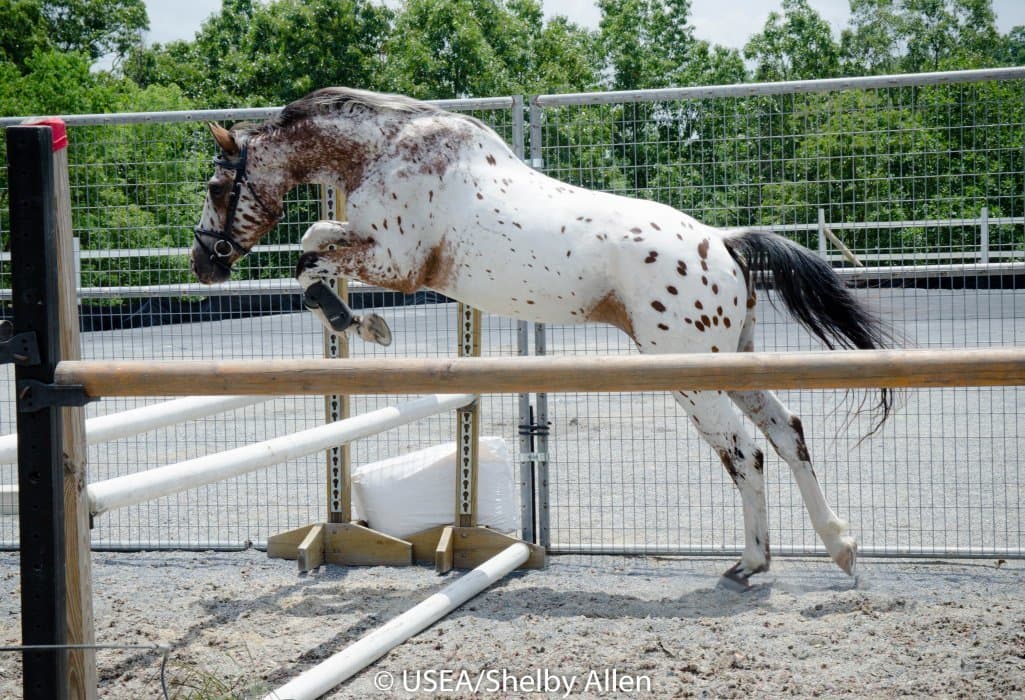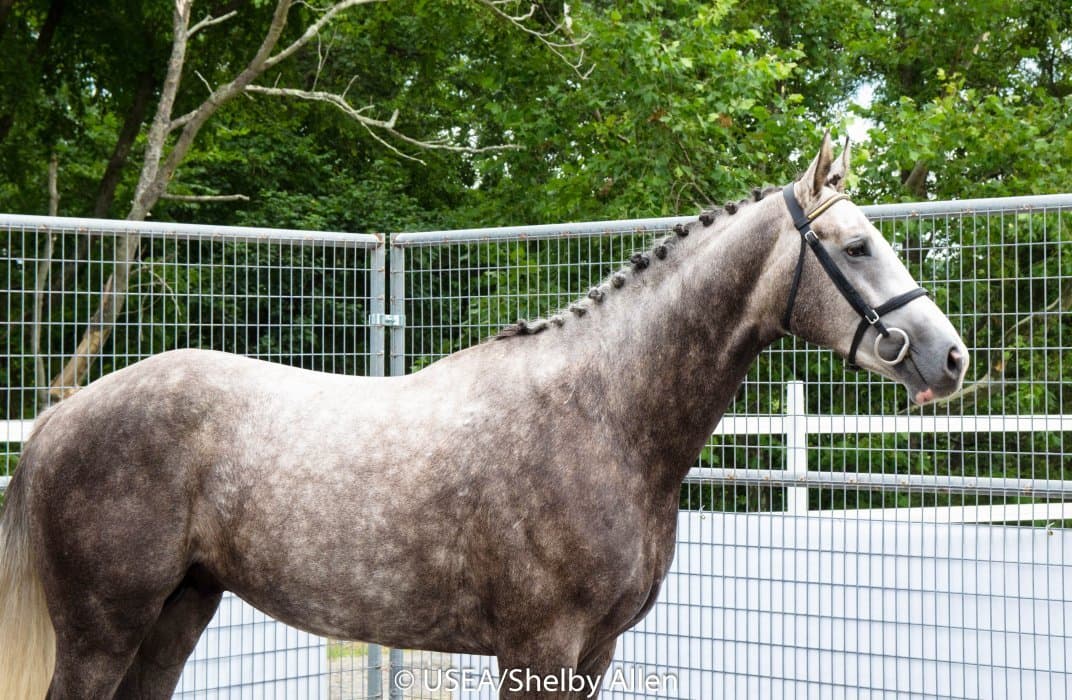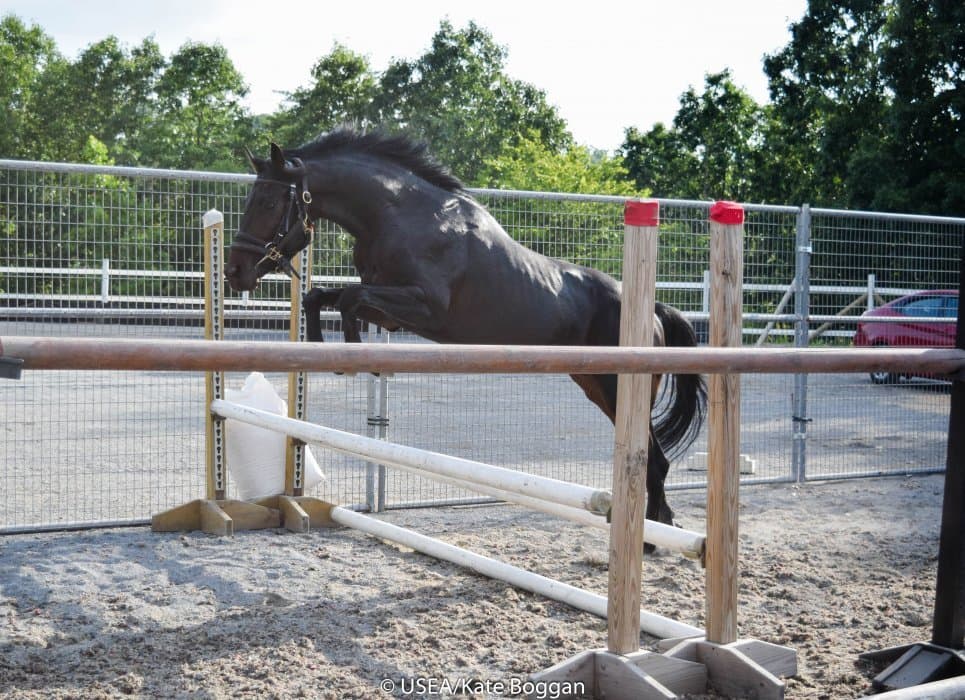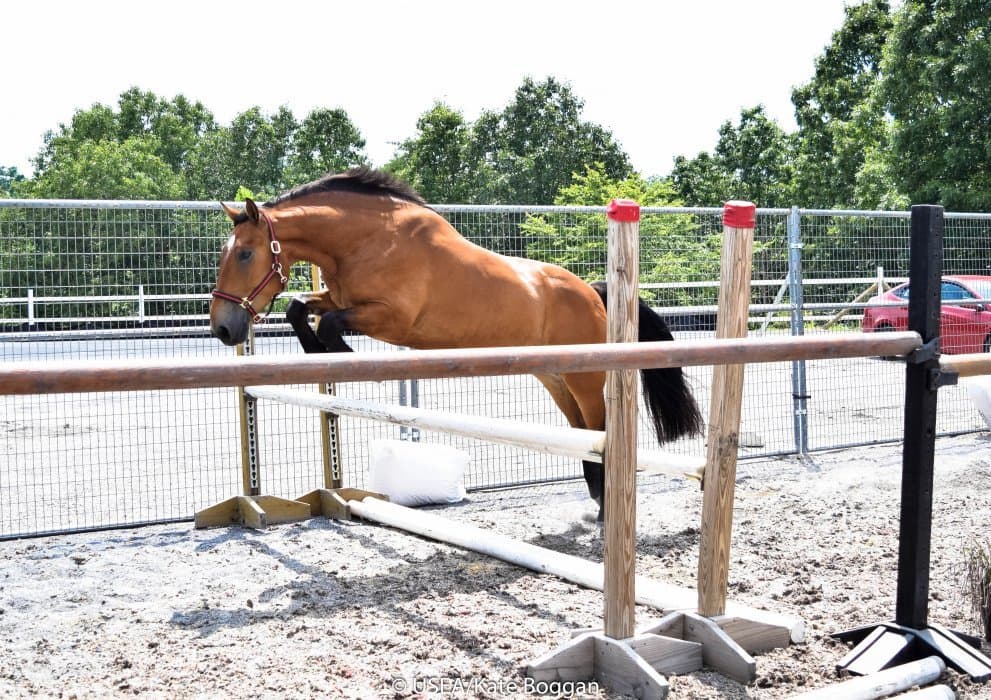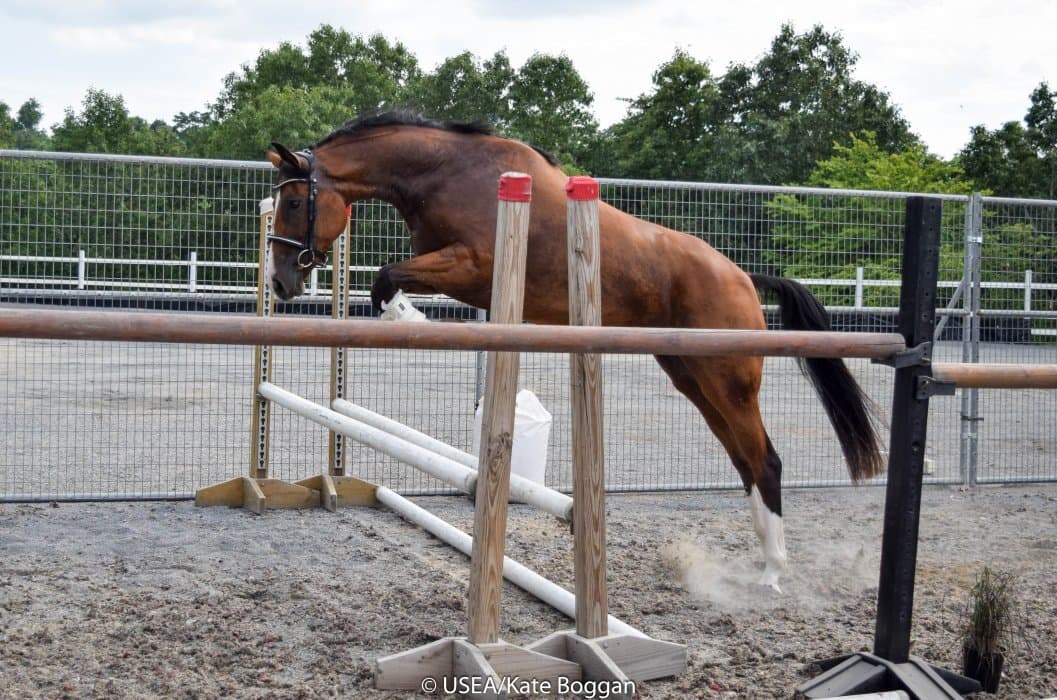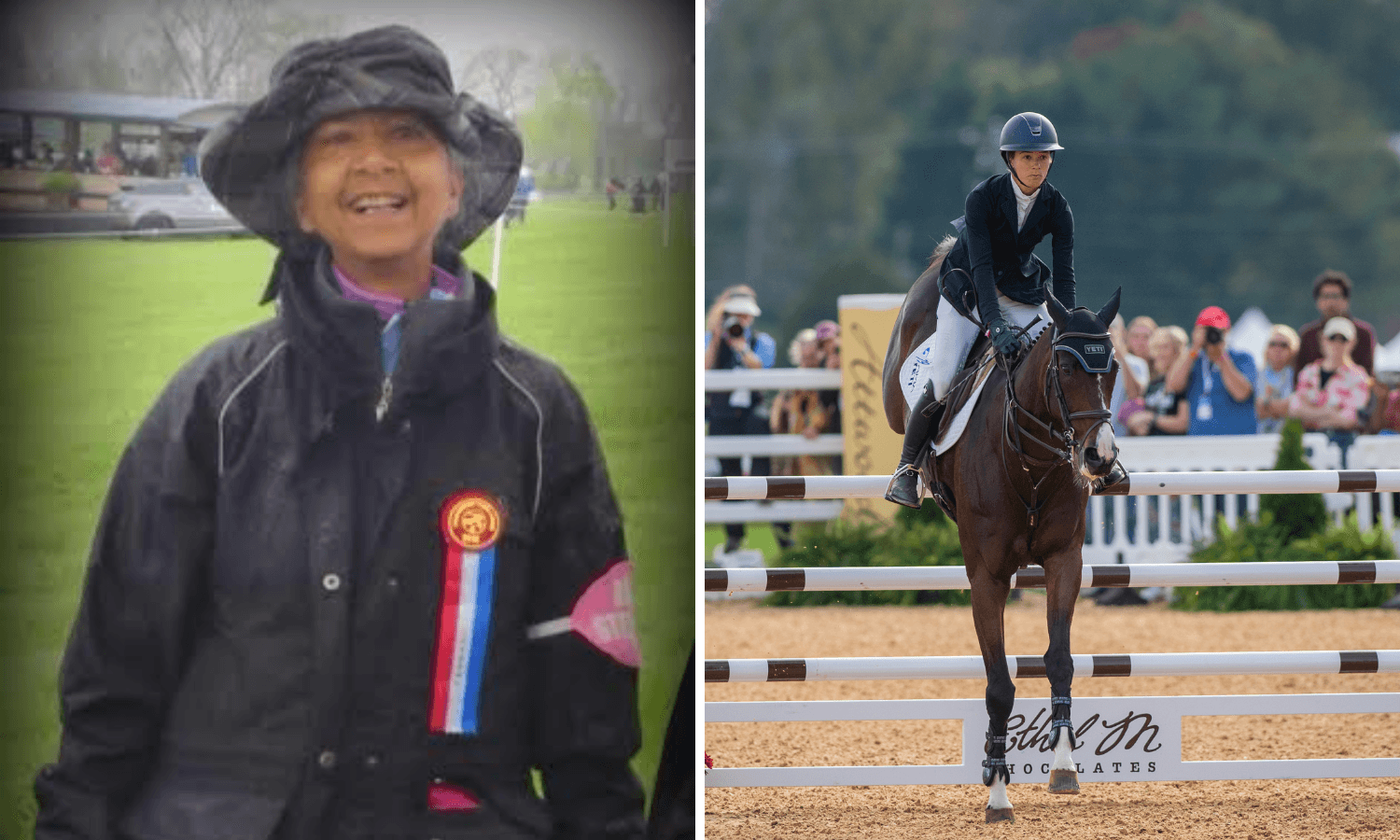Future Event Horses Perfect Their Technique at Loch Moy Farm's Jump Chute Clinic
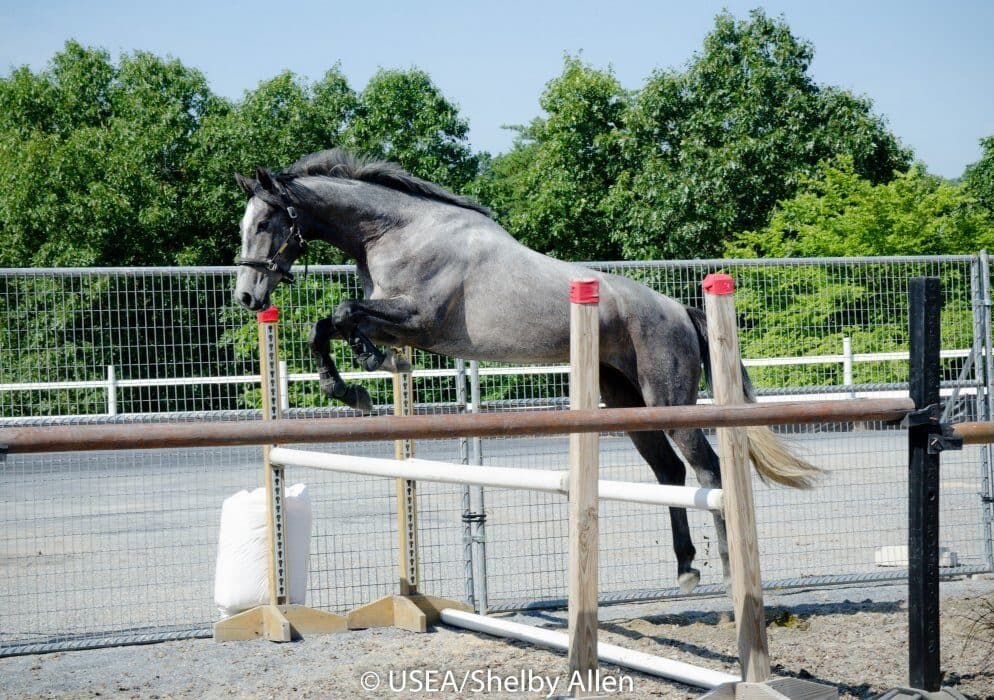
A little heat didn’t stop 17 participants from coming together at Carolyn Mackintosh’s beautiful Loch Moy Farm for a Future Event Horse (FEH) jump chute clinic last Thursday. Owners, handlers and breeders left with a plethora of information as well as some valuable practice navigating a jump chute in preparation for the FEH Championship this fall. From an adorable Belgian Draft cross to beautiful OTTB's, to a flashy Knabstrupper gelding, all the horses reflected their high quality breeding and showed great potential.
For the first time since the creation of the program, the 2016 Future Event Horse Championships will require 3-year-old horses to take part in a mandatory jump chute competition in addition to the standard in-hand class. This is thanks to Priefert for providing the program with a custom jump chute structure that feature seven-foot panels to create the safest environment possible for the young horses. The maximum set up for the jump chute is as follows:
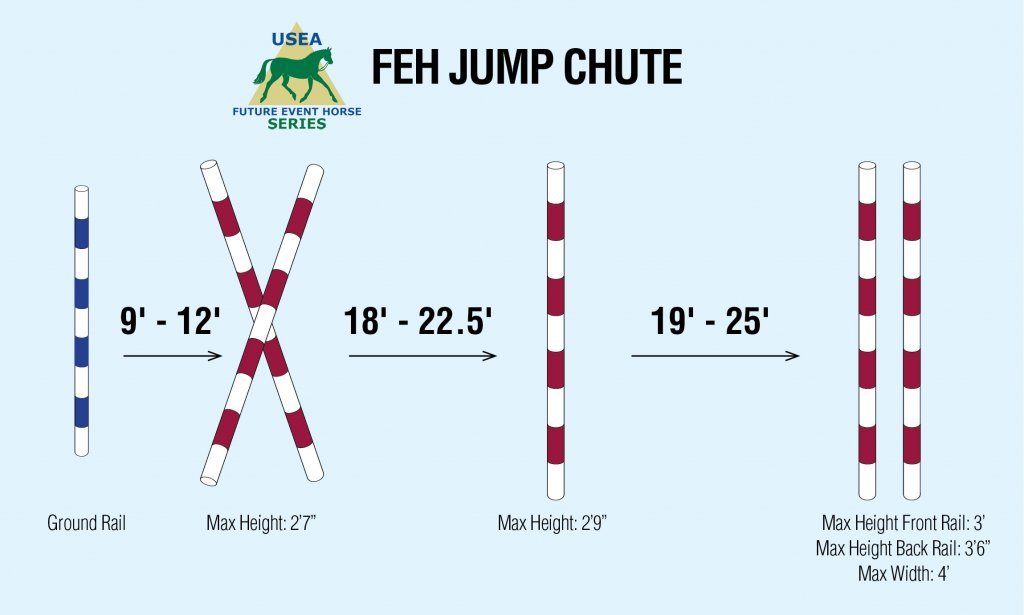
The clinic was run by Samantha Allen, a champion for the FEH program. She judges many FEH competitions across both the East and West Coasts, including at last year’s championship. In addition, Allen is a USEF Eventing judge (r) and TD (r). She gauged each participant’s experience and goals in order to create the most successful environment for each young horse.
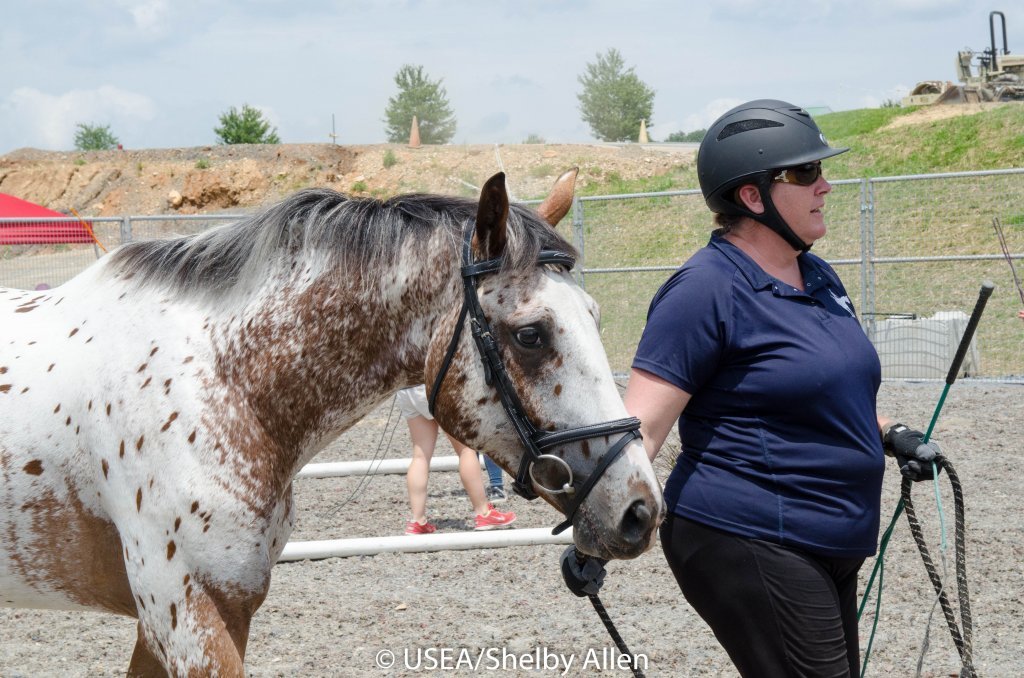
Samantha Allen, the lead clinician.
The main objective of Thursday’s clinic was to give horses a confident introduction through the chute and set up the exercise to best showcase each horse’s jump and movement. Allen utilized placing poles, cross-rail oxers and strategically placed volunteer ring crew to encourage the horses to go boldly through the chute while maintaining a relaxed demeanor and developing a nice round jump.
The two and three year olds that will be traveling to championships this fall were warmed up in the ring at liberty in a figure eight pattern. A new feature to this year’s championships, to judge the horses’ canter, they will be directed through a figure eight pattern around two diamond shaped markers instead of one large loop around the ring. This is to encourage the young horses to take direction from the handlers rather than turn the ring into their personal race track. All the horses began by walking and trotting in hand over poles in place of the jumps through the chute, to get acclimated to the task. After being lead down in-hand, the horses would be sent through on their own before the jumps at height were carefully introduced.
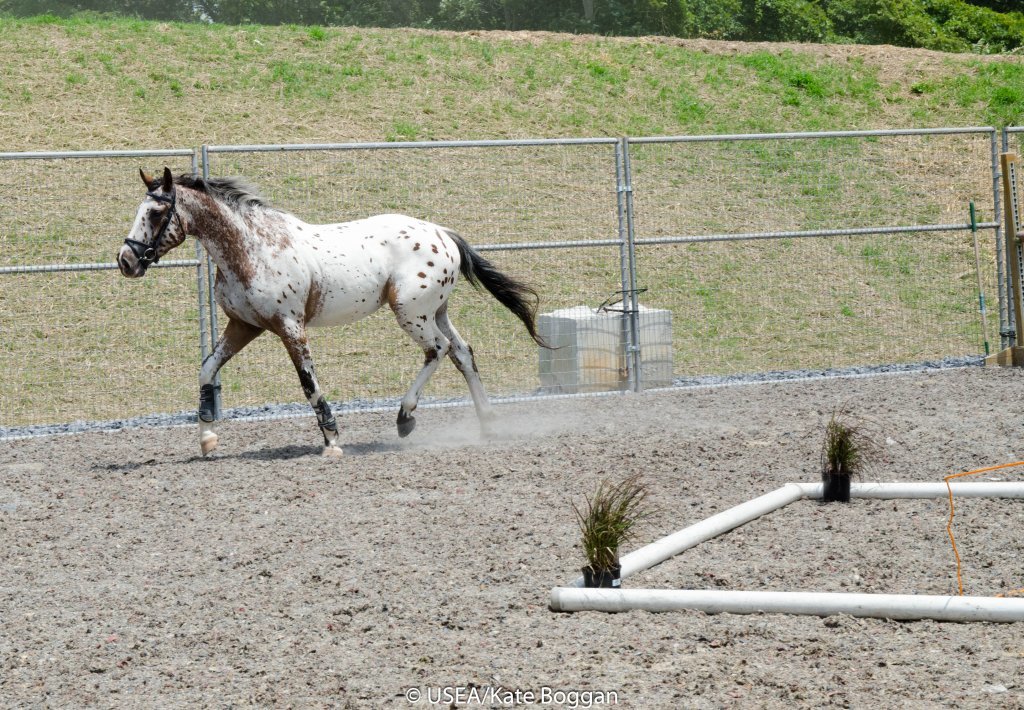
Horses are encouraged to trot and canter freely around the diamond-shaped markers that can be seen in the bottom right of this photo.
Allen’s principle idea in this environment is to adjust the chute dimensions (i.e. distances between fences) and handler behavior (i.e. leading, catching and encouraging the horse to jump) to fit each young horse individually. “Change the chute to fit them. We want to make this the best case scenario for 2- and 3-year-olds. In their 4-year-old year we would start to ask them to adjust for us,” she elaborated. The progression of each session also depended on experience level and the horse’s attitude on the day. It is not a requirement for each horse to build to all three fences or maximum height – and that reflected in the variety of sessions.
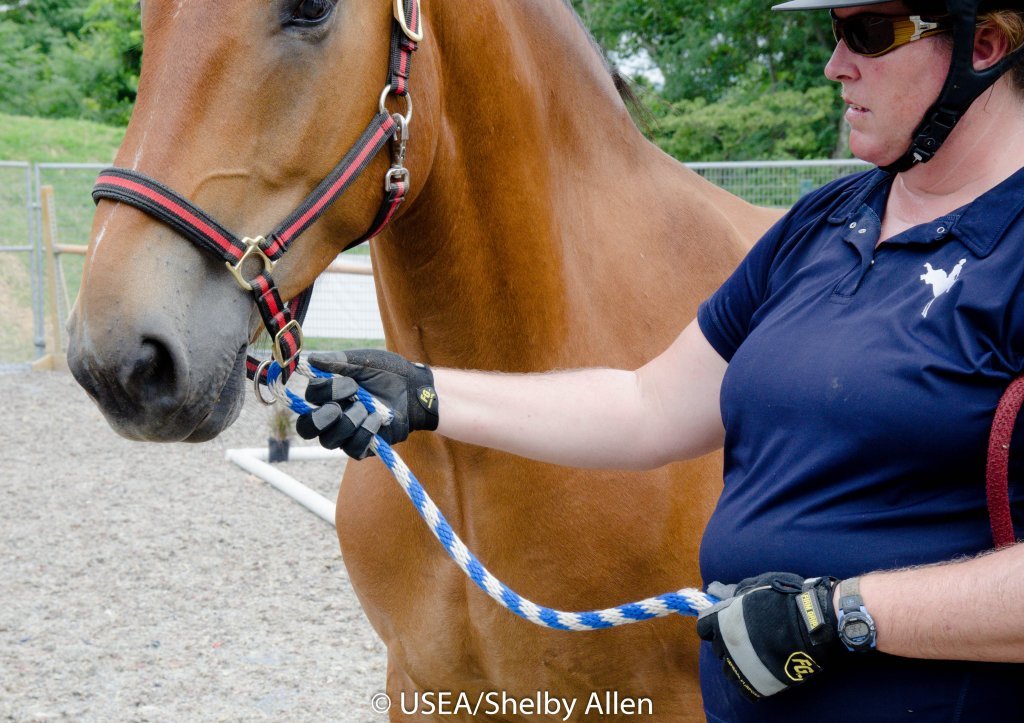
Allen demonstrates her technique for holding a lead into the chute.
After being lead down in-hand, the horses would be sent through on their own over the poles. Allen has a particular strategy to leading and releasing horses down the chute. She uses a short lead rope she can loop around some part of the halter or bridle. It will loop around so that only a short tail is left to hold on the inside. This allows you to have control, but you can slowly let go of one end when the time comes to send the horse down the chute. Allen explained that using this method helps the release to be as smooth as possible, allowing your horse to show his best abilities immediately down the chute.
Allen used this clinic to highlight potential steps you can take if things do not go as planned in the chute. First, if horses were difficult to catch at the end of the chute, it was crucial for handlers to prevent them from coming back down the jumps in the opposite direction. “They must learn to go forward and that they must go one direction,” she said. If a horse stopped at a fence within the chute, Allen again emphasized the need for forward encouragement. Handlers would jump in to catch the horse, while other volunteers lowered the rails of the jump before again allowing the horse to finish the chute going forward.
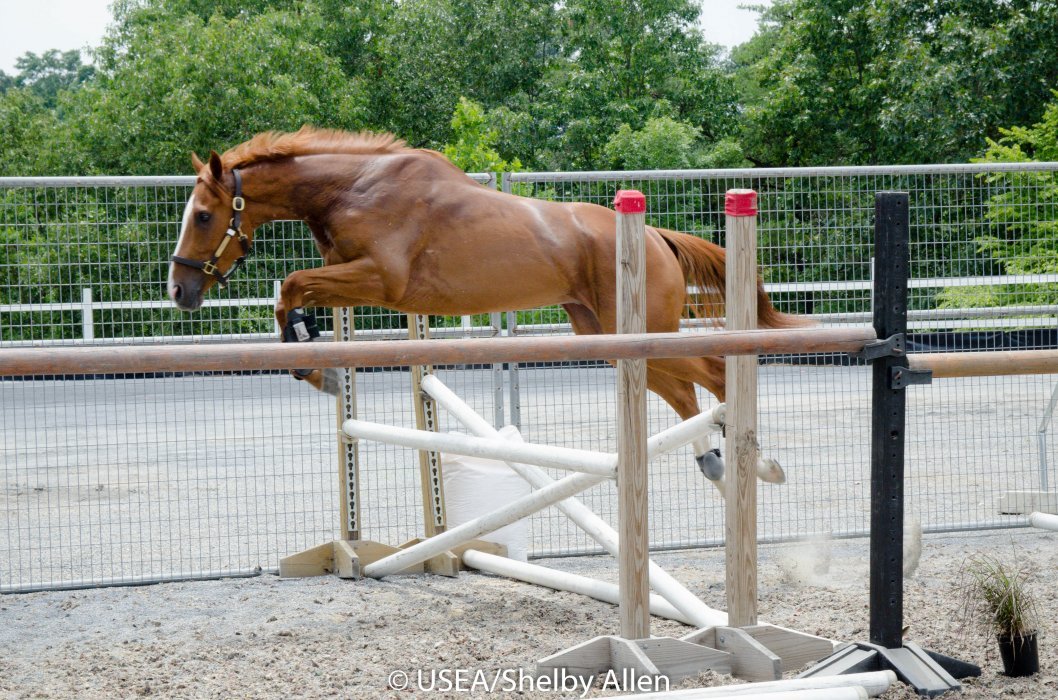
Using a cross-rail oxer can encourage a young horse to jump more through their back.
If a horse blazed through the chute with a bit too much enthusiasm, placing poles were used between fences. This encouraged the young horses to keep thinking throughout the exercise and, encouraged them to slow down to do so. If horses exhibit a flat jump and not through their backs, Allen advises handlers utilize a cross-rail oxer as the final fence, assuming the horse had progressed to a three fence chute, to encourage the horse to use their neck and back more properly.
Overall every participant came away with some great training techniques to continue using in preparation for the fall championships, where each horse will have 4-6 turns through the jump chute, slowly building to maximum height at the owner/handler's desire.
The USEA would like to thank FEH presenting sponsor Priefert for providing a jump chute structure for the West Coast, which was custom built for the FEH program with safety being the main priority in the design. The custom structure is composed of 12-foot long mesh wire panels, each standing 7-feet tall.
The USEA also sends a sincere thank you to Samantha Allen for being our lead clinician, Carolyn Mackintosh for hosing this clinic at your beautiful Loch Moy Farm, the fabulous chute volunteers and all participants who brought their lovely horses.
The West Coast also hosted a jump chute clinic earlier this summer at Dragonfire Farm. You can read more about that by clicking here.
About the USEA Future Event Horse Series presented by Priefert
The USEA Future Event Horse Series (FEH) was introduced in 2007 as a precursor to the already popular USEA Young Event Horse Series. The FEH program evaluates the potential of yearlings, two-year-olds, and three-year-olds to become successful upper level event horses. Each age group is judged separately, and genders within the age group are judged separately when the number of entries allows. To learn more, visit the FEH page of our website.
The Future Event Horse Series is made possible by a lineup of great sponsors including Priefert, Smartpak, Standlee, Professionals Choice and Merck.
West Coast Championship at Twin Rivers, Septmeber 23, 2016
East Coast Championship at Loch Moy Farm, Oct. 6, 2016
